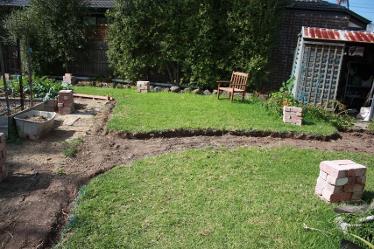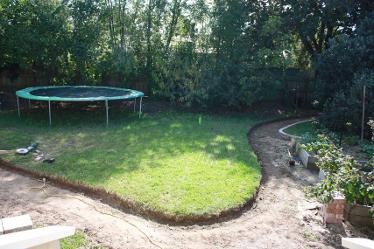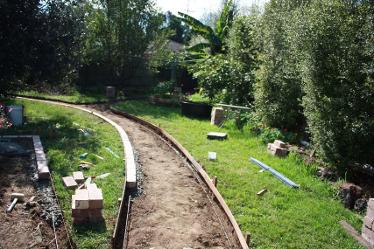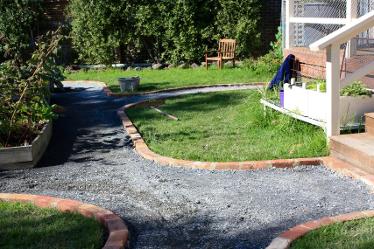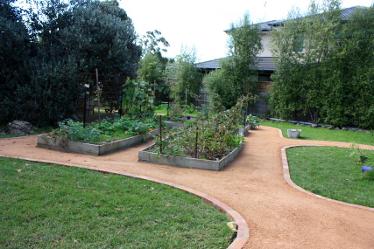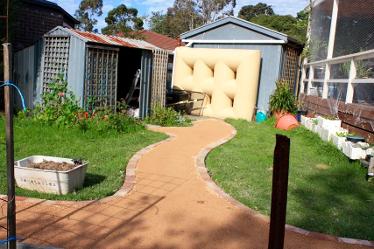Erin's Garden
The story of a garden...
In 2014 the four large vegetable beds in Erin's
garden were home to thriving weeds. Despite
some wonderful crops of tomatoes and corn,
initial enthusiasm for home grown vegies had
waned due to lack of time and knowledge.
Still, Erin wanted fresh, unsprayed food for the
family, and
as a home-schooling parent she saw
home food growing as an important part of
her
daughters’ education. But help was needed to get
the garden organised and flourishing.
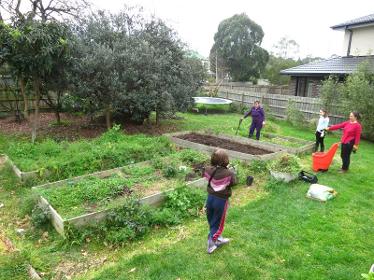
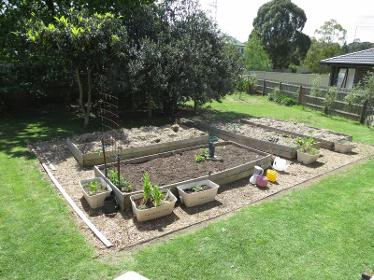
An advertisement in a favourite local café led to
‘The
backyard Vegetable’ joining the family on a
weekly basis to guide the work and
learning in
the garden.
School lessons now included applied maths
(measuring,
drawing scaled plans), microscopy
(up close and personal with pollen grains,
insects, pond life and plant cells), soil science,
plant identification and
propagation, seed saving,
life cycles of garden insects, knot tying, the use of
hand and power tools, and creative ways to use
seasonal over-abundances of garden produce.
Thursday mornings have become favourite times
- what can be better than working and learning
together to grow food for the table and to share?
The weeds came out, the vegetables went in,
new garden beds were created and meals
began to include lots of freshly picked foods.
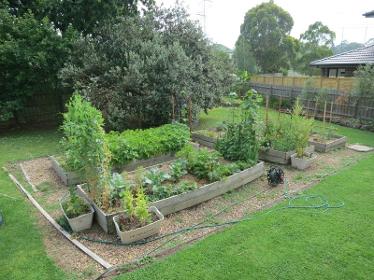
However...
.
Gardening with limited eyesight is an extra challenge, and
Erin
seriously wondered if it was going to continue to be possible for her.
A YouTube
video* of Jeremy Scott, an award-winning British gardener
who is blind made her think again: ‘Well, I’ve got no excuse now, have I!’
Public gardens often include a sensory garden for people who don't see well but Erin wants
a garden she can work in to produce food, as well as a garden that is beautiful for all to enjoy,
and a garden that provides habitat for native insects and birds.
each year? There were two immediate difficulties:
You make your way to a corner of the garden, you do a bit of work here, a bit of work there, you turn
around from time to time and then... Which way are you facing?? How do you get back to the house?
Finding things
Locating specific vegetables or herbs in our mixed plantings was not easy.
Easy maintenance would be important too, including fewer edges for the kikuyu lawn to breach,
and less mowing.
Coming soon! A picture!
The second point was quickly dealt with.
Growing each plant variety in distinct rows or
sections marked out with lengths of garden
stakes, or better still off-cuts of white pvc pipe
makes finding plants for harvesting or
watering easier.
Sound will help. Windchimes or water trickling will give some direction-finding points.
Scented and textured plants, and even bollards can indicate position in the yard.
But first up was the path, we decided. A circling path so that it doesn't matter which way you walk, it will
always lead you back to the house.The path is definitely the starting point.
It will define edges and future garden beds,and makes access easier for everyone.
Enter Kushala, Ari and
Anu*. Three weeks of muddy digging, mortaring of bricks, laying of gravel,
and compacting of topping produced a beautifully curving path, surpassing all our expectations.
